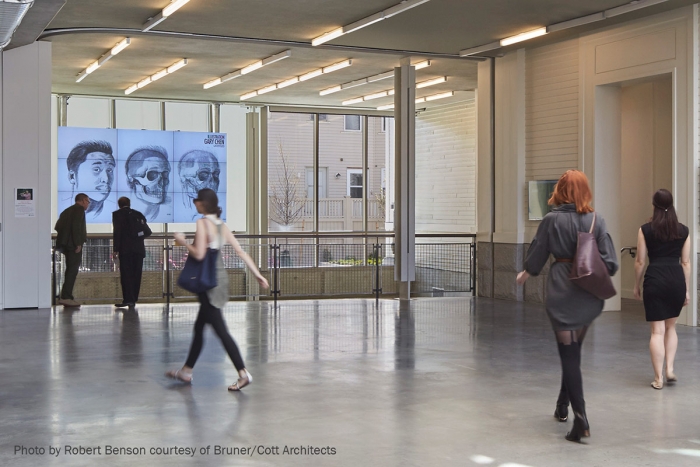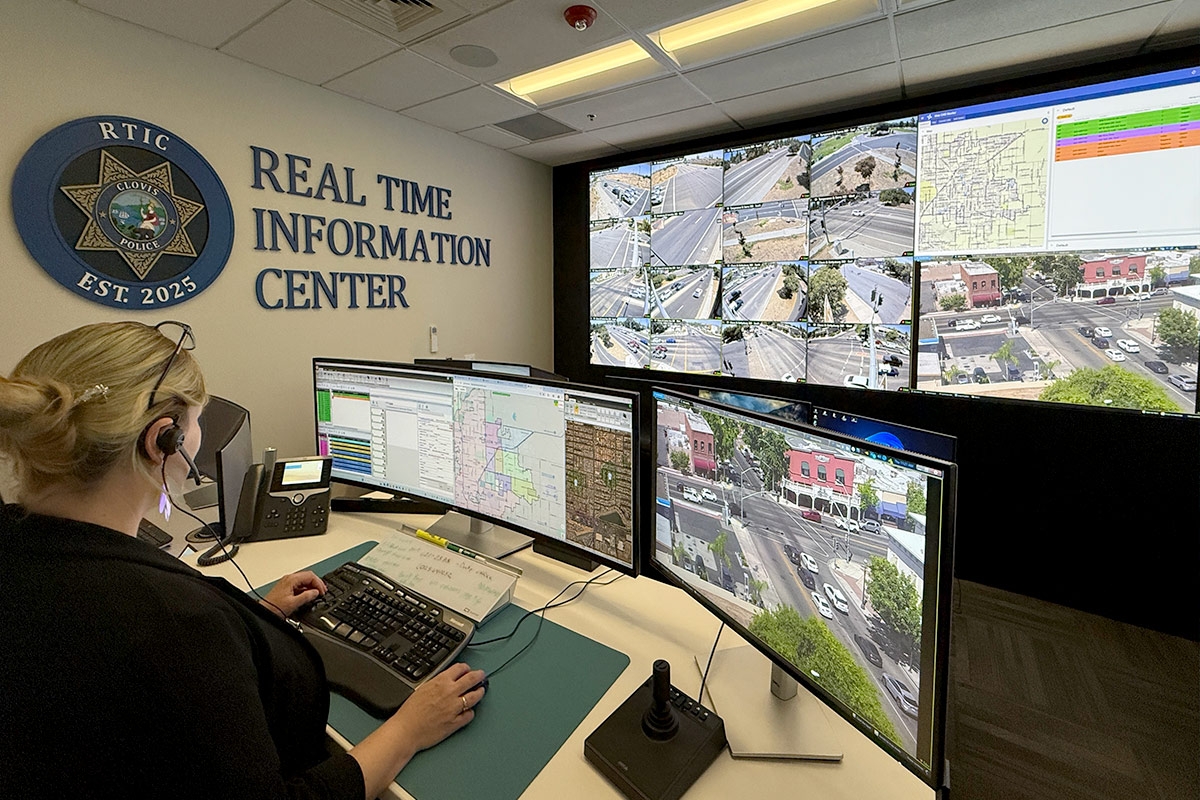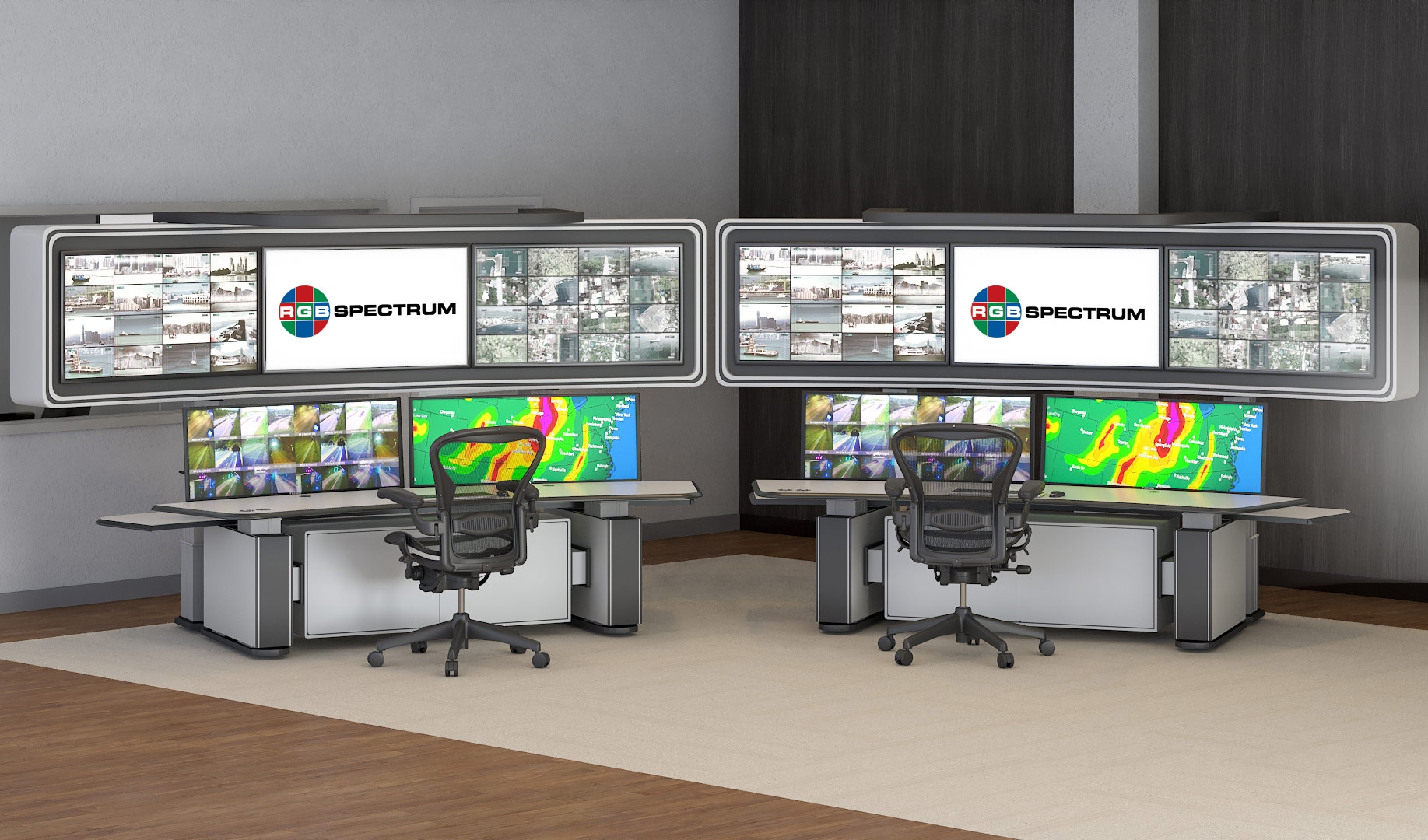Galileo Helps Lunder Arts Center Engage On Campus and Beyond with Cambridge Community
Front and center in the glass-walled atrium lobby of the Lunder Arts Center in Cambridge, Massachusetts is a vibrant 3x3 video wall comprised of 42” displays and powered by an RGB Spectrum Galileo display processor. Visible day and night from inside and outside the contemporary structure, the video wall serves as a community centerpiece, engaging students, faculty and passersby with a large-scale, high-res vision of the artworks created within the Lesley University College of Art and Design.
Created with a vision to provide cutting-edge educational facilities for future visual art and design professionals, the 74,000-square-foot Lunder Arts Center opened in 2015 following Lesley University’s consolidation of arts campuses in a structure that merged a historic church with a new four-story terra cotta and glass building. The atrium and other open shared spaces were built with community connection in mind, and the video wall’s designation as a centralized place to promote events, conferences and the work of students and faculty, is a critical part of that mission.
Students, faculty, guest speakers and event organizers are all keen to have their visual content displayed on the video wall, so part of the technology design brief was to streamline the process of keeping the display material up to date and refreshed. In the architectural design phase, the audiovisual design team from consultant firm Acentech worked with Lesley University to provide flexible infrastructure to support a video wall setup, and later during construction the video wall technology was specified and installed by local AV integrator Adtech.
The Galileo processor provides the ease-of-use and reliability needed to keep the video wall up and running, and always looking fresh with new images. The PC-based, IP-enabled video wall processor makes it easy for the school’s digital communications specialist and IT personnel to connect remotely and update its content. The Galileo’s support of a full range of inputs also makes it easy for visiting presenters to plug in to an accessible control panel to show their slides.
As the school ramps up use of the video wall, most content is comprised of still images delivered via a Keynote presentation loop. Some portion of the content is video, and there are plans to move toward more dynamic media in the future, including work from the school’s animation and digital film departments.
In addition to being a draw for students and community members, as well as providing support for various events, the video wall also plays a role in attracting and retaining talented students. New students will be pleased to find their work already on rotation when they arrive each semester, as the video wall content manager assembles presentations that include images from each new student’s work. The large-screen display is also center to fostering a community spirit with school-hosted movie nights. Refreshes of event material are ongoing, and a bevy of new images come with end-of-semester portfolio critiques, when professors share lots of new, high-res images of student work for display.
Response to the video wall has been enthusiastic, which keeps digital content specialist Abigail Michaud busy with a multitude of requests for content sharing and event planning. The Lunder Arts Center atrium is a popular location for Lesley University events and for those held by other community organizations. “One of the reasons they want to host an event here is the large screen and the high-quality presentation they’ll get,” Michaud explained.
In terms of student and community engagement, the video wall display is a success on a multitude of levels, she added: “It keeps everybody connected. It serves as not only a conversation starter but as a way for people to see others’ work and be inspired to learn how to create that type of project or have their own work featured up there. It’s not just the students, but the staff and faculty and everybody involved in the building. The level of work that is produced here is pretty outstanding, so it’s a nice way to display the work and show what’s going on in the Lunder Arts Center. The video wall is one more thing that helps the school stand out from the rest of campus and the rest of the university.”
RGB Spectrum is a leading designer and manufacturer of mission-critical, real-time audio-visual solutions for a civilian, government, and military client base. The company offers integrated hardware, software, and control systems to satisfy the most demanding requirements. Since 1987, RGB Spectrum has been dedicated to helping its customers achieve Better Decisions. Faster.™


